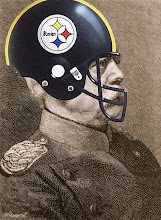The fact that journalism in this country is biased is a truism. Whether it’s FOX on the right or CNN on the left, it’s all biased. This bias is no longer ideological (that is, based on ideas) rather, it is political (that is, trying to get the candidates of one party or the other elected no matter what ideas or plans they might champion). As part of his ongoing series on Der Spiegel’s daily news letter entitled, “West Wing: The Battle for the White House,” Gabor Steingart wrote a troubling piece on the media in the US on 13 May entitled, “The Media’s Mini Truths” (http://www.spiegel.de/international/world/0,1518,553068,00.html). He states, correctly, “the real loser of the election campaign is the American people. They have been betrayed by cynical journalists who have constantly opted for style over substance.” This “style” results in all issues being driven out of the political discourse in favor of oversimplified sound bites. More troubling, Steingart notes that many of the “experts” working for the media are really employees of the candidates or their respective parties. He notes, for example, Karl Rove “is now under contract with Fox News, Newsweek and the Wall Street Journal.” Likewise, “Donna Brazile, who appears on CNN as a commentator on every election night … is actually a member of the exclusive Democratic National Committee and one of her party's superdelegates.” As a result of infusing the news with the propaganda of these “expert analysts” – talking heads – journalism this election cycle is the most politicized and biased in memory.
The political as opposed to ideological focus of journalism and its oversimplification of important concepts is best exemplified in the popular usage of the terms “liberal” and “conservative.” As descriptors, these two terms are now meaningless in the US. It is possible to define something in its opposite. For example, if something is liberal, the opposite might be considered conservative. However, for this approach to work, you have to have something at least positive. However, in this country, both conservatism and liberalism are both defined by their opposites. Thus, if the Democrats are for something, the Republicans are automatically opposed to it, and vice versa. For example, in most of the world, liberals are internationalists, while conservatives are nationalists. But, in this country, the Democrats are opposed to NAFTA largely for the reason that the Republicans are in favor of it. Thus, the “liberals” (Democrats) are, in this particular case, nationalists, while the “conservatives” (Republicans) are internationalists. The reality is that the terms liberal and conservative in this country have become synonymous with DNC and RNC, which is not very instructive.
Part of the reason for this oversimplification of domestic politics is the economic and political need for the news media to reduce everything to easily digested nuggets. The media must package as many flashy geegaws as possible into twenty minutes or the first few pages to ensure maximum ratings and maximum earnings. Call it news-tainment. Another example of this oversimplification is the reduction by the media and the public of the rest of the world into two camps: those who are our friends and those who are not yet our friends. But, as soon as the second group accepts democracy and McDonalds, they will become our friends. This is what passes for foreign policy analysis for most of the media and most of the undereducated public.
Like so much else in this country, the root fault with the media is the fault of the US educational behemoth to produce educated individuals. And, if you think about it, neither the Republicans nor the Democrats want really well-educated individuals. The Republicans don’t want educated persons because they organize and create things like unions. The Democrats don’t want well-educated individuals either because educated persons ask questions and challenge authority. The DNC knows what’s best for us, even if we don’t. And by God they, as the anointed, are going to fix us.
Perhaps that’s why the media has been woefully lax in reporting on the presidential candidates’ educational platforms. In the 19 May 2008 issue of US News & World Report, “Not a Primary Concern: In the Background, the Candidates Make Plans for America’s Schools,” Dana Hawkins-Simons, in a brilliant understatement, observes, “How each of the presidential candidates would attempt to improve the American school system is difficult to ascertain, given the limited dialogue on education thus far on the campaign trail.” If by “limited,” Hawkins-Simons means non-existent, then the candidates have exhausted the meaning of “limited.” Hawkins-Simons breaks down the candidate’s stands on three issues: No Child Left Behind, Teacher Pay, and Higher Education Affordability. At the time of the article, Hillary Clinton was still in the race. Not surprisingly, her ideas and those of Barrack Obama were barely distinguishable. However, just looking at Obama’s and John McCain’s stands on these three issue, the similarities are staggering. Both would keep NCLB (which has proven to be an unmitigated disaster, http://aspatula.blogspot.com/2008/02/teaching-our-kids-to-be-idiots.html) but tweak the tests. Both candidates believe merit pay is the best way to ensure equitable treatment of teachers. However, since most merit pay systems are tied to student test performances, we’re back to the miasma of teaching to the test – another focus of NCLB that has crippled our educational system. The only significant difference between the two candidates on education is that Obama would provide tax credits for college tuition to make higher education more affordable while McCain would open up junior colleges to receive more federal financial aid to train displaced workers. Education is just one of many issues that is too complex to be solved by the undereducated listening to cynical purveyors of news-tainment.
Subscribe to:
Post Comments (Atom)

No comments:
Post a Comment